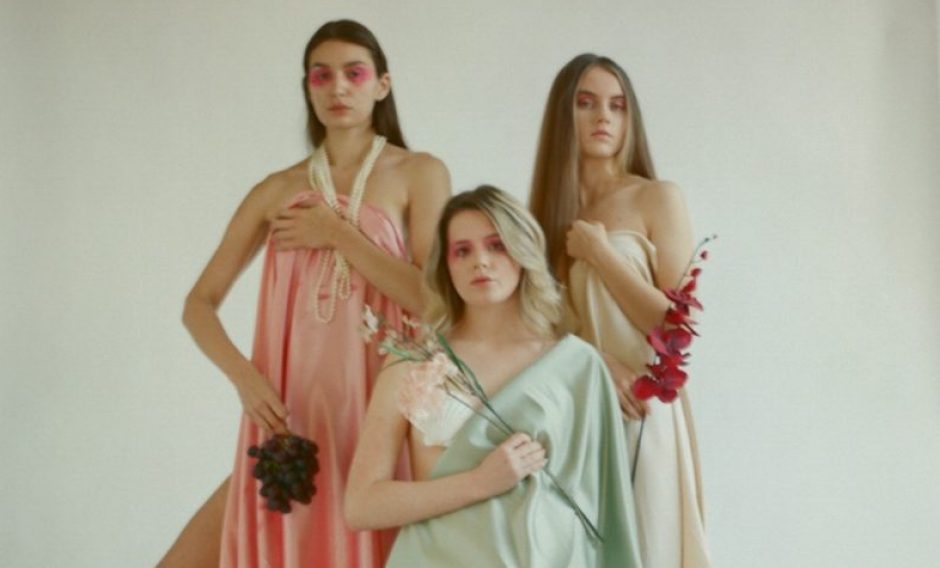Through this project and particularly during the early refining stages of constructing my research question, I came to the realisation that defining the language and terminology I use helps me focus and develop a framework of further questions and areas of research. As a fashion media practitioner dealing with beauty ideals, I was concerned that I wasn’t critically analysing fashion concepts involving clothing or dress. My personal definition of fashion is a that it is a reflection of our social, political and cultural climate, I knew I wanted to examine beauty within this framework but wanted to ensure I was still under the umbrella of ‘fashion researcher’. In arguing that the evolving boundaries of beauty classify as a relevant topic for a fashion media practitioner, I was therefore suggesting that the subjective concept of beauty and process of beautification could be included in what we define as ‘dress’. Whilst investigating, I drew reference from Eicher’s classification system of dress, which argued that we ‘recognise that the dressed person is a gestalt that includes body, all direct modifications of the body itself, and all three-dimensional supplements added to it…because they are equally effective means of human communication’ (Eicher, 1992).
At this stage and with my initial proposal devised, I constructed a research question including the main areas I was interested in (identity, beauty and the phygital experiences which linked the previously mentioned themes together). My research question initially asked, “how is the Fourth Industrial Revolution impacting Identity construction through the concept of ‘beauty’ and phygital experiences?” Through the creation of a question framework which led on from my research question, I was able to construct two aim’s which covered two main pillars of the project; the first was to establish the evolving experiential aspect of virtual worlds and alternative realities (particularly social media and new media) and speculate on how the parameters of beauty will evolve within these spaces. The second aim was to explore the emerging shift in societal behaviours and values, examining how Gen Z and Millennial’s are redefining identity by pushing beauty boundaries and ‘performing’ a fluid and multifaceted virtual self.
In order to ensure my area of research was succinct and focused, I broke down what it was that interested me about ‘the future of beauty’ it, concurring that it was the impact of technological advances on beauty trends and emerging ideals. In terms of the methodology, a structured plan was devised and to obtain the data for the first aim, I decided on Phenomenology based ethnography, developed from social phenomenology (Schütz, 1972) which as previously mentioned, allows for an examination of the participant’s subjective experience. In addition to this, for both aims, I conducted extensive ethnographic observations regarding this research question and the projects aims. The second aim required an additional amount of quantitative research in order to gather metrics and statistics which explored a shift within societal behaviours and emerging demographics (Gen-Z). The final section of my methodology consisted of utilising existing theories and frameworks and then re-applying them to explore the increasingly evolving landscape / subject areas I proposed to examine.
I briefly explored fashion showcasing and communication with reference to LFW’s new gender-neutral digital platform as the Covid-19 pandemic had halted physical showcasing, therefore digital media and new ways of communicating fashion concepts were on the rise. This shift in society led me to briefly explore a comparison between now and the way fashion was showcased in the 1990s (with the impending millennium and technological anxiety rife). Although the cancellation of traditional fashion week and the rise in digital media that was being used to communicate and promote fashion was extremely interesting, I decided that I needed to further refine my project. I concurred that, my personal definition of fashion involved the body (adornment, alteration, movement, cultural aspects of the body etc). Expanding on the research I conducted into AR beauty filters, I decided to focus on virtual identities through the concept of beauty and immersive new media, as opposed to fashion showcasing and wider aspects of fashion and beauty media. Again, using definitions to refine my research area led me to define the concept of beauty which I speak about. Determining that ‘beauty’ lies in both societal projections of ideals as well as the ways in which the concept of beauty is rooted in identity construction.
For a short while, I focused more precisely on facial ideals and skincare Through ethnographic research and gathering of reports from sights such as LSN:Global and other forecasting companies, I noted the rise in physical health becoming synonymous with beauty. Through prior research, I had seen that there was a rise in skincare tutorials on social media platforms such as TikTok, which were becoming intrinsically linked to the wellness trend. I was fascinated by the ritualistic aspect of these skincare routines which led me to examine the juxtaposition of health and wellness becoming equated with virtual beauty. Alongside this, I discovered my passion for trend forecasting and analysing current societal shifts to speculate on and map future macro trends. Referencing the digital transformation of society, I found a way of working where I identified shifts in society as a reaction to the rise of the internet and digital currencies, particularly with regards to beauty ideals and trends. This led to a particular way of working as a practice-based researcher and I found my personal way of practice led research lay in reimagining traditional stories with a speculative and futuristic lens (utilising concepts such as the still life to further delve into my concepts – explain link to practical experimentation).
